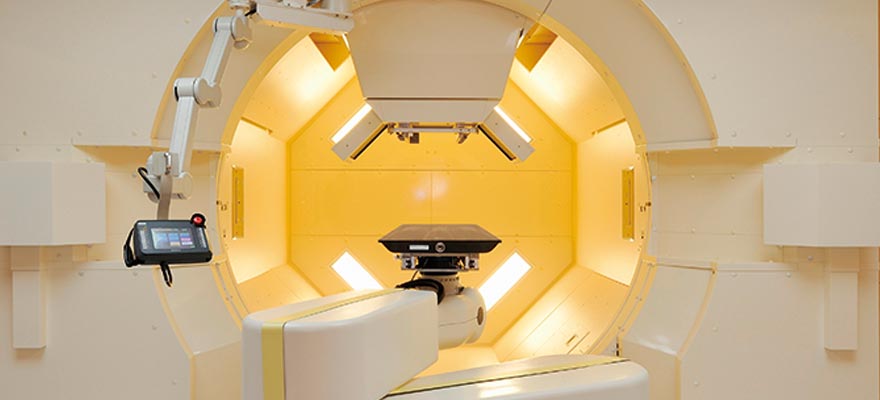Home > Highlighting JAPAN >Highlighting Japan March 2014>Science & Technology
Highlighting JAPAN
Science & Technology
From Incurable to Curable
Real-time tumor tracking advances cancer treatment

IN 2009, Japan's Council for Science and Technology Policy (CSTP) established the Funding Program for World-Leading Innovative R&D on Science and Technology (FIRST Program). The program's goal was ambitious: to advance cutting-edge research in a wide spectrum of fields, with the aim of achieving global leadership in each field within five years.
Professor Hiroki Shirato, MD, PhD, was one of 30 core researchers selected to take part in the program. Working in the Department of Radiation Oncology at the Hokkaido University Graduate School of Medicine, he aimed to develop a technology for radiation therapy that would make previously incurable cancers curable.
"Ninety percent of current radiation therapy is done using X-rays," Shirato explains. "But while X-ray therapy can heal tumors of up to 3 centimeters in size, larger tumors can be more difficult to cure." This is because X-rays pierce through their target, meaning that attempting to strike a large area - or a moving one - will result in extensive damage to healthy tissue beneath the targeted cancer cells.
More controllable than X-rays, proton beam therapy has gained attention as being relatively painless and capable of avoiding damage to healthy body functions and tissues. In proton beam therapy, protons found in the core of hydrogen atoms are accelerated at high speed and intensively irradiated at the tumor. Using this technology, Shirato says, "Even tumors larger than 6 centimeters can be cured more safely than with X-ray therapy. But proton beam therapy still had difficulty dealing with tumors in motion such as that caused by breathing," due to the high level of accuracy required.
This is what Shirato determined to address. "I began research on moving tumors in my 30s, aiming to cure them as easily as those that don't move," he says. "So I came up with the idea of combining proton beam therapy with robotics technology that was developing around the same time, and computer pattern recognition seemed to be the best solution for curing large cancer - particularly those kept in motion by breathing." This technological innovation allowed radiation to be applied with pinpoint precision without the need for human control of the device.
The result is what Shirato now refers to as a real-time tumor-tracking proton beam therapy system with molecular imaging. The system uses proton beam therapy, aided by spot-scanning and real-time tracking of cancer cells, to cure larger-sized cancers and moving tumors. "It will increase the five-year survival rate of lung cancer patients to 30 percent from the current 10 percent," Shirato says.
The key technological challenge was the computerized tracking of cancer cells in the body. "Actually, it's still easier to find lung cancers, which are surrounded by air," which has a completely different composition from the cancer cells, Shirato explains. "But it's extremely difficult to identify cancer in watery organs like the liver, because healthy cells have almost the same constituents as cancer cells."
The problem was solved by marking cancer cells with pieces of metal (2-millimeter gold markers) that are harmless to the body. "We had to develop this new technology in the midst of the project to support our device's capability for accurate cancer visualization."
The real-time tumor-tracking proton beam therapy system is the product of five years' joint research and development between Hokkaido University and Hitachi, Ltd. Future challenges will be miniaturization and cost reduction for wider use around the world. But Shirato's work has already added one more effective option for treatment of cancer patients. Shirato himself plans to implement clinical use of the device starting in March 2014 after receiving pharmaceutical approval in Japan. "In fact, one of the best hospitals in the U.S., Mayo Clinic, had purchased our device already."
Shirato's desire as a doctor, he says, has been "to save all cancer patients." With this innovation, he has come one step closer to realizing his goal.
© 2009 Cabinet Office, Government of Japan






